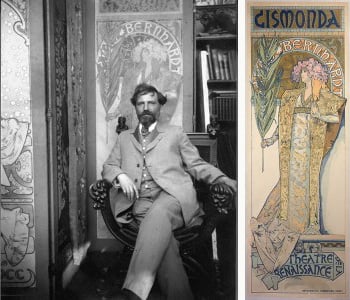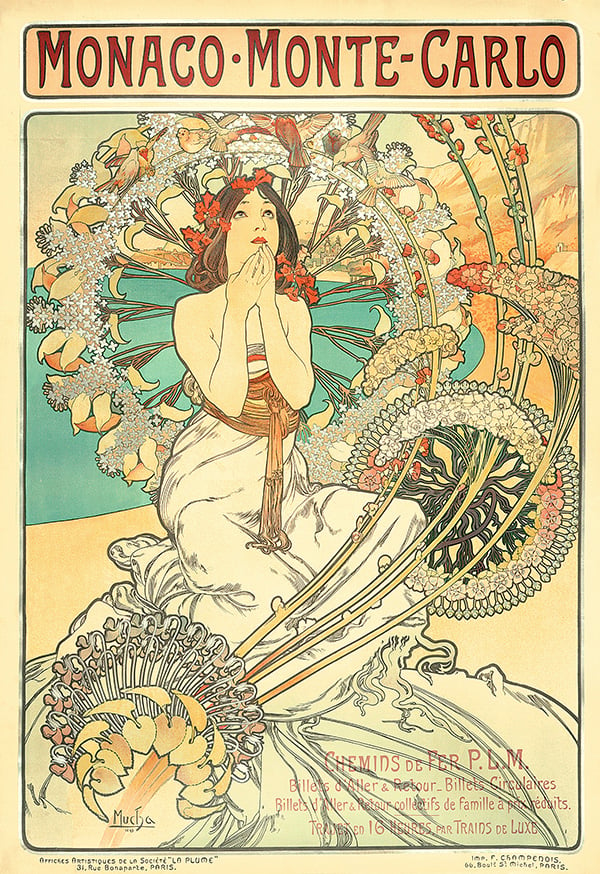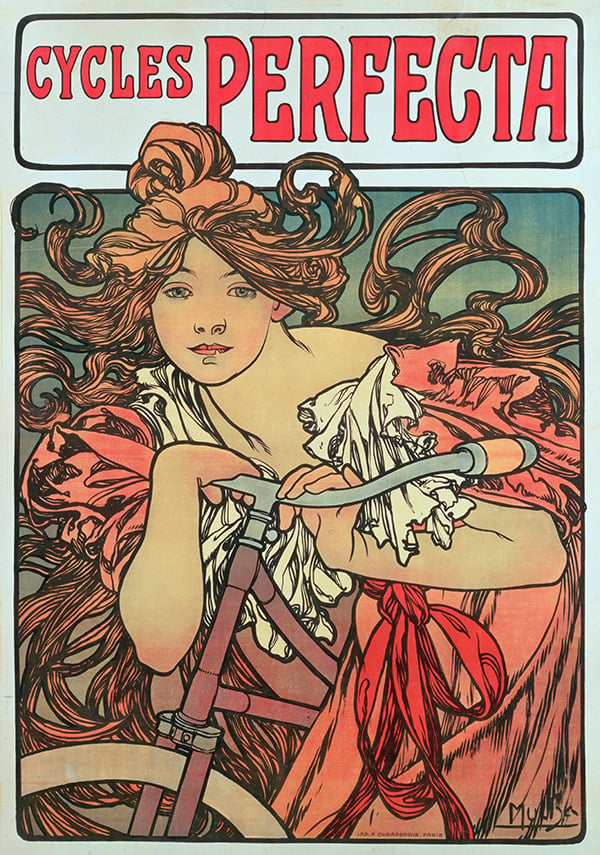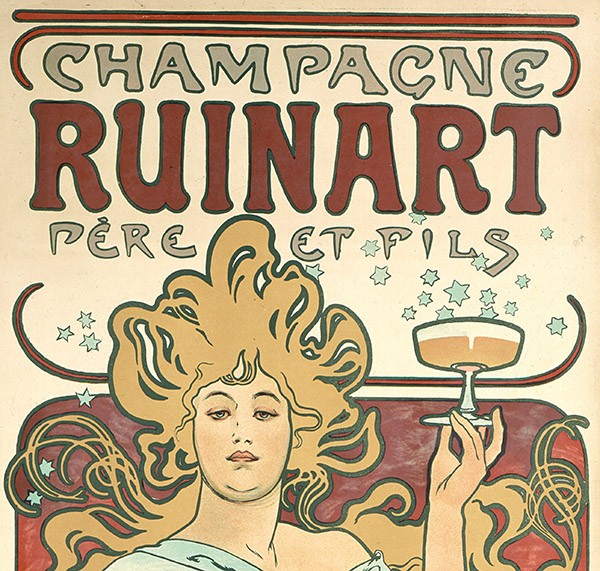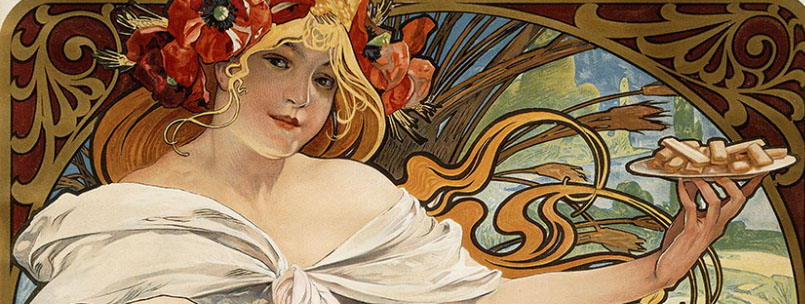
Mucha: The Allure of the Poster
Czech artist Alphonse Mucha (1860-1939) made his name in fin de siècle Paris, where he shot to fame after designing the first masterpiece of Art Nouveau poster design for the actress Sarah Bernhardt – so popular that the posters were stolen off the streets by the enchanted public.
Mucha believed passionately that art was an essential benefit to humanity and that it should be seen and enjoyed by as many people as possible. The Mucha Foundation was established in 1992 to promote his work. Following a partnership with Bridgeman Images, reproductions of over 200 of Mucha’s most striking works are available to view online and for licensing, a small selection of which can be seen below, focussing on poster art commissions for the luxury industry.
The Graphic Revolution
During the 1890s, called the “Belle Epoque” in France, the popularity of poster art was such that in 1884 a major exhibition was held in Paris and posters transformed the avenues of Paris into the “art galleries of the street.” Largely reliant upon form, line and colour, Art Nouveau proved the ideal poster design, and dominated the Parisian poster scene up until the late 1900s.
Mucha was a highly desirable illustrator not just for theatre, but for a whole host of consumable products that remain some of his most recognizable works. The combination of a beautiful female figure, rich decoration and extravagant lettering became all the rage.
Promoting luxury brands
Mucha’s posters reflect modern life in turn of the century Paris. The subjects range from railway services to diverse consumer products such as perfume, cigarette paper, beer, champagne, chocolate and biscuits, as well as bicycles.
How Ruinart used art to sell champagne
In 1896, the French champagne house Ruinart procured some work from Mucha, when he was a young artist. Tall and narrow, it featured a beautiful, near-life-size woman with coiling hair and a profusion of stars from a champagne glass. Ever since then, Ruinart has used contemporary art to promote its champagne.
A distinctive graphic style
In his design the image of a woman was used strategically as a medium for communication, first to draw potential consumers’ attention with her feminine beauty and then to send an alluring message about the product she was representing. The woman’s hair coils into impossible whiplash lines and ornamental spirals, taking on the appearance of decoration.
The flowery, ornate style showed multiple influences including the Pre-Raphaelites, the Arts and Crafts Movement and Byzantine art. His distinctive graphic style was to dominate the Parisian scene for the next ten years and the major international decorative art movement up until World War I.
Images for Licensing
See all images from the Mucha Trust available for licensing via Bridgeman Images

